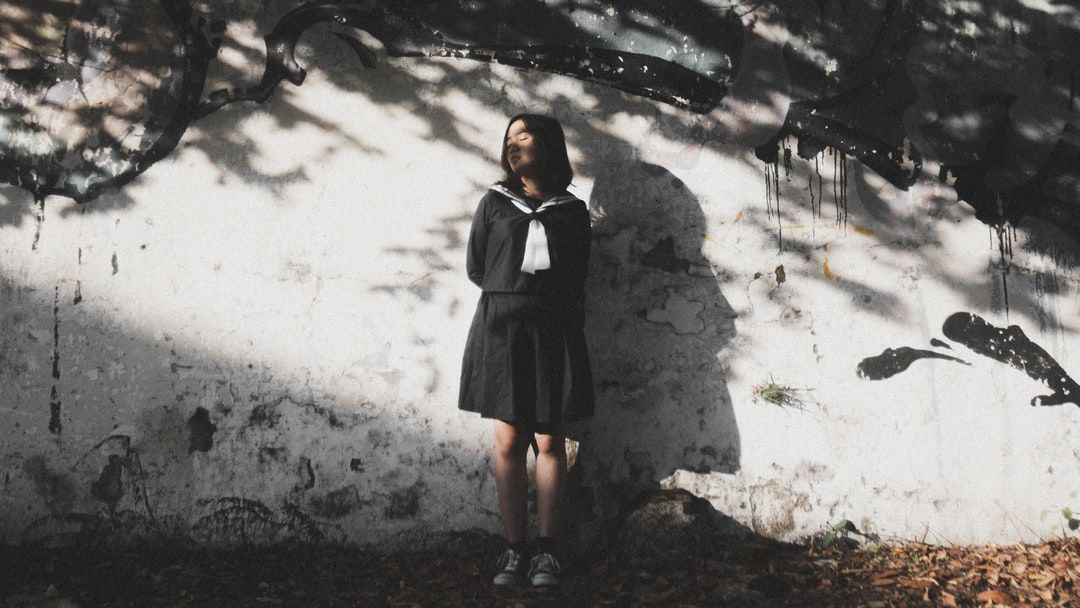Should students wear uniforms? - The school you don't know (12)

The Ministry of Education recently announced that regarding the principles of student clothing and grooming, in addition to important activities, physical education classes and practical (test) classes, students may be required to wear specific clothing, and students can choose a suitable mix of uniforms, sportswear and other clothing approved by the school ( Such as class uniforms, club uniforms).
Earlier, the Ministry of Education revised and issued the "Notes on the Regulations for Teachers' Guidance and Discipline of Students" by the Ministry of Education, and the original Article 21 had been changed: "Regulations on students' clothing and appearance should be based on the conduct of public hearings and explanations in schools. A school-wide questionnaire survey will be conducted to solicit the opinions of students and parents, and follow the democratic participation process to create an enlightened and trustworthy campus culture. regulations as the basis for punishment.”
Having said so much, can students wear the casual clothes of their choice to go to school in the future? cannot! Because you have to wear school-approved clothing. Will the student be punished for this? Won't! Because clothing cannot be used as a basis for punishment.
Then... what should students do if they don't wear school-approved clothing?
Let’s take a look at the archaeology first. When did Taiwanese students start wearing uniforms? The time point may be earlier than you think. In 1895, the Japanese government, which ruled Taiwan at that time, introduced a school education system in which students wore uniforms to replace traditional private education organizations, but due to the resistance to Japanese rule at that time, the volume was always high. However, there are still many Taiwanese who are reluctant to accept Japanese-style education. In order to reduce the sense of exclusion, the Japanese government did not initially mandate that Taiwanese students should wear uniforms like Japanese students, hoping to attract more Taiwanese to study until 1919. It was only when the Japanese government issued the New Taiwan Education Decree that it officially stipulated students' dress codes, including uniforms, shoes and hats, school bags, etc. The amazing thing is that when the Kuomintang took over Taiwan and tried to remove the traces of the Japanese, it chose to leave Under the stipulation that students wear uniforms until now.

The archaeological part ends here. For those of us who are living in 2020, it is not meaningful to explore why the Kuomintang left the regulations on wearing uniforms. Today, students who still support students wearing uniforms are usually no more than the following three reasons:
(1) In order to let students do not need to spend too much thought on arranging daily wear.
This point is undoubtedly correct, but those who uphold this argument often mistakenly lead "students do not need to worry about wearing daily clothes" to the result of "students will focus on their homework", but please everyone Stop deceiving yourself. Today, children save ten minutes of choosing what to wear tomorrow. They usually move to swiping phones, farting with classmates, and surfing the Internet, rather than doing math and memorizing English words.
Ideally, let the child understand that in each period of life, each thing has a different order of priority, and the limited time should be allocated to higher priority things , for example, dressing up like a princess may be far away. It's more important to understand a math question! If the child understands, the help may be greater than simply prohibiting the behavior! Taking a step back, if today's children have time to dress themselves up while finishing their schoolwork, what's so bad?
You can't help your child draw a lifetime schedule. Helping your child understand the rules of schedule as soon as possible and let him know how to use time properly is the key.
(2) Everyone wears uniforms to avoid the gap between the rich and the poor.
This obviously doesn't make sense! Six years in elementary school, three years in middle school, and three years in high school, at which stage is the total study time so short that it is impossible to distinguish the family economic status of other students? What brand of phone are you using? What brand of sneakers are you wearing? Do I need to go to work after class? When it is enough to show everyone's economic situation, education should not teach children to hide their economic situation, but to teach children not to discriminate or bully their classmates because of their economic situation. After leaving the society, they will encounter more In more cases like this, in a relatively simple school environment, isn't it one of the goals of school education to learn the self-cultivation that one should have after entering the society?
(3) It is easier to identify outsiders entering the campus, which helps to enhance campus security.
This reason is also paradoxical! Ninety percent of those who break into the campus to make troubles are not of the age group of the students. How can it be necessary to judge whether the person is a part of the campus by whether or not he wears a uniform, so as to reduce the risk of the campus? Don't forget that a university campus is a field that does not need to wear uniforms and is completely open to the outside world. Compared with high school students, the vigilance and self-defense awareness of college students may be lower. Do college students wear uniforms?

You can come up with 800 reasons to explain that students are required to wear uniforms to school, but please think about it, are these 800 reasons really helpful to children? Or is it simply to improve the management convenience of schools and teachers? If it is the latter, when it becomes a management trouble, is it still necessary to exist?
Get rid of all dress codes! The half-hearted norms not only make students irrelevant, but also make teachers fall into the dilemma of whether to manage or not to care. Looking back at the announcement of the Ministry of Education: "Students can choose to wear a suitable mix of uniforms, sportswear and other approved by the school. Clothing", what does "school recognition" mean? The author, the dean of the school’s academic affairs, once reprimanded the students during a large gathering: “Someone comes to the school wearing a casual hat (a collarless top with a hat), what is the etiquette!” Clothes are not casual. I only know that when it rains, the hat has a slightly shielding effect. The author, who was standing next to the students, happened to be wearing a black hat. The author approved it, but the dean of academic affairs did not approve! Can students wear it? Some teachers think that the clothes that are close to the body are immoral, but the class uniforms for girls’ classes choose to be tailored to the body, and the tutors are happy to wear them to look good on their bodies.
What is school-approved clothing? The Ministry of Education recommends: "As for students' clothing and grooming, the opinions of students and parents should be widely accepted by means of public hearings, briefing sessions or school-wide questionnaires, etc., and should be determined according to democratic participation procedures, so as to create an enlightened and trustworthy campus. culture.” In fact, the practice of each school may be to include the opinions of students, parents and teachers, but it is determined by the teachers, and the voices of students are purely for reference! If you don't believe me, go and see how many school uniform committees are functioning normally? Go to see how many students go to the school administration meeting of each school?
Let's look at another rule: "Schools shall not use the rules on student clothing and grooming as the basis for punishment." If students insist on wearing clothes that are not approved by the school, what should teachers do? The school now has a bunch of items that can be regulated but cannot be punished. Each item requires the school and teachers to work hard to deal with it. If the most controversial item of clothing is added, the teachers will spend more time. How much time?
If the occasions representing schools are excluded, the existence of uniforms is no longer necessary, then let us return to the original point of thinking, the existence of uniforms does not mean that uniforms must be worn! Casual clothes are a choice, and uniforms are also a choice. If it is comfortable and beautiful, there is no need for special requirements, and students will take the initiative to wear it. Unreasonable norms only make students feel repulsive, and half-baked norms only make teachers more difficult to manage. , In this case, completely remove all uniform-related specifications and make uniforms a part of casual clothes!
The Ministry of Education told us: "To encourage young people to be thoughtful and creative people, and to be open-minded, is to give them an opportunity to explore and express themselves." Then let it go! Give students full decision-making power, and let them learn the rationality of costumes on their own with the help of teachers. Stop forcing them to stand blankly in the circle drawn by adults, as in the past, but they still do not understand why they are Can't take a step out of the circle.
Finally, let's take a look at a small study. Kaohsiung High Business students once analyzed the southern students' thoughts on wearing uniforms. Interestingly, for the question "Are you in favor of lifting the ban on uniforms?", only 56% of them agreed. In other words, nearly half of the students who were transferred did not agree with the lifting of the ban on uniforms, which means that even if the relevant regulations on wearing uniforms are abolished today, I am afraid that nearly half of the students will automatically wear uniforms to school! Let's look at another topic "Why do you agree to lift the ban on uniforms?" Among them, 28.6% of the students were because "the uniforms were of poor quality", 21.9% were because "the uniforms were too expensive", and 22.9% were because "the uniforms were not good-looking". If schools can rule out these factors, how many students will take the initiative to wear uniforms to school?
Let your child decide what to wear.

Like my work? Don't forget to support and clap, let me know that you are with me on the road of creation. Keep this enthusiasm together!


- Author
- More